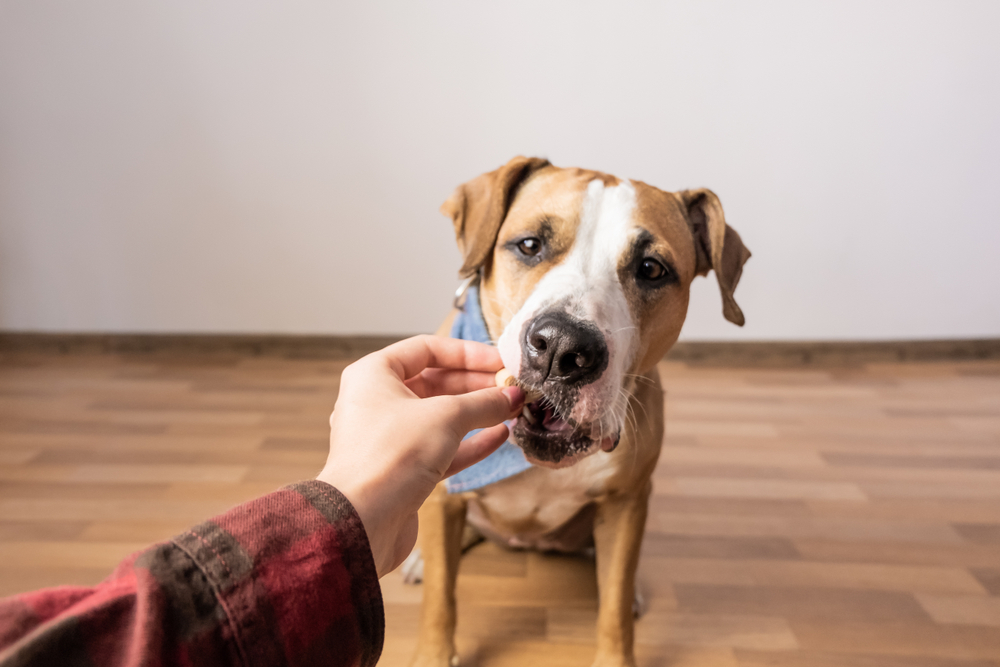5 Surprising Facts About Heart Disease in Pets

A fun fact: Your pet’s heart beats approximately 35 million times per year. With each heartbeat, your pet’s hard-working heart pumps oxygenated blood to each of their cells, from nose to tail.
A not-so-fun fact: Approximately 10% of dogs, and 15% of cats, have heart disease. Since every part of your pet’s body depends on oxygen, heart disease can have serious, far-reaching systemic effects. To increase your knowledge of heart disease in pets, our Bayside Animal Hospital team shares other facts.
#1: Your pet’s heart is anatomically similar to yours
Your cat or dog’s heart is composed of four heart chambers—two upper chambers (i.e., atria) and two lower chambers (i.e., ventricles). Blood travels through the body releasing its oxygen, and returns to the right atria. The blood is then pumped to the right ventricle, and through the pulmonary artery to the lungs, where it is oxygenated. From the lungs, blood flows to the left atria, then to the left ventricle, and through the aorta to the body’s cells. The heart works as a pump to keep blood flowing in this continuous cycle.
Your pet’s heart also contains four valves, which function to help blood flow in the correct direction, and include:
- Right atrioventricular valve
- Left atrioventricular valve (i.e., mitral valve)
- Pulmonic valve
- Aortic valve
#2: But, pets do not develop the same heart disease types as people
Pets do not develop atherosclerosis or heart attacks, which are leading causes of heart disease in people. Pets eat a fairly low-fat diet, which prevents fat from accumulating in, or obstructing, their blood vessels. Older, small-breed dogs can develop valvular degeneration, which causes blood to backflow from the left ventricle to the left atria, similar to mitral valve regurgitation that occurs in people. Other heart diseases that commonly occur in pets include:
- Hypertrophic cardiomyopathy (HCM) — HCM, which is the most common heart disease in cats, causes the heart wall to thicken internally. Heart chamber size decreases, and the heart cannot pump a normal blood volume.
- Dilated cardiomyopathy (DCM) — DCM develops when the heart wall weakens and stretches, which dilates the heart chambers. Weak heart contractions cannot pump blood adequately, and the diseased heart fails to meet the body’s oxygen demands.
- Heartworm disease — Heartworms, which are transmitted by mosquitoes, live in a pet’s heart and blood vessels. The adult worms cause significant heart and lung damage, and obstruct blood flow.
- Congestive heart failure (CHF) — Any heart disease that interferes with the heart’s ability to keep up with normal blood flow, such as HCM or DCM, can lead to CHF. As blood backs up in the vessels leading to the inefficient heart, high pressure causes fluid to leak into the lungs and abdomen. CHF is a common heart disease consequence in people and pets.
#3: Heart disease can lead to rear leg paralysis in cats
Cats with DCM develop sluggish blood flow, and may develop a clot in their right atria that can break free and travel through the aorta. The clot typically lodges where the aorta splits into smaller vessels that send blood to the back legs, blocking blood flow. Cats with an aortic thromboembolism become suddenly paralyzed, and often drag their back legs. This condition causes significant pain in affected cats, and carries a poor prognosis.
#4: Heart disease signs may not be obvious in your pet
Unfortunately, cats with HCM often show no heart disease signs until they become acutely paralyzed. Other heart conditions may also cause silent disease in pets, or signs may develop so gradually that owners do not notice. Heart disease typically causes mild, non-specific clinical signs, such as lethargy, decreased appetite, and weight loss, in the initial stages, and more severe signs are not observed until congestive heart failure develops. Fluid accumulation in and around the lungs causes coughing and difficulty breathing, which are more obvious.
During your pet’s regular wellness and preventive care visits, our Bayside Animal Hospital veterinarians perform a thorough physical exam, including heart disease screening. Your veterinarian will carefully listen to your pet’s heart and lungs for murmurs, arrhythmias, or abnormal lung sounds that could indicate a heart problem. We may also perform additional tests, such as blood pressure measurement or electrocardiography (ECG) in older pets, who are more prone to developing heart disease. By regularly assessing your pet’s overall health, we can detect problems, such as heart disease, before they become advanced and possibly shorten your pet’s life.
#5: You can protect your pet from some heart diseases
You cannot prevent your pet from developing every heart disease, but you can reduce their overall risk, and prevent specific heart problems. Like people, overweight pets have a higher risk of developing heart disease, but an appropriate veterinary-approved diet and daily exercise can reduce that risk. Ask your veterinary team to help you calculate your pet’s appropriate amount of food, including treats as only 10% of their daily calorie allowance.
Heartworm disease is deadly, but is easily prevented with medications our veterinarians can prescribe. Many preventive products are available, from monthly flavored “treats” you can give at home, to a long-lasting injection we can administer. Ask our team which product best fits your pet’s needs, so they do not develop this preventable disease.
Some DCM cases can be prevented by feeding your pet a veterinary-approved diet. DCM typically develops in genetically predisposed dog breeds, such as Doberman pinschers and boxers, but a recent rise in cases has been linked to boutique, exotic, and grain-free (BEG) pet foods. The FDA is investigating this situation, and we recommend you avoid feeding your pet these diets until a clear cause is established.
Our Bayside Animal Hospital team wants to ensure your pet stays healthy, happy, and by your side for as long as possible. Contact us to schedule a wellness visit for your pet, so we can detect any abnormalities before they advance and cause problems.


